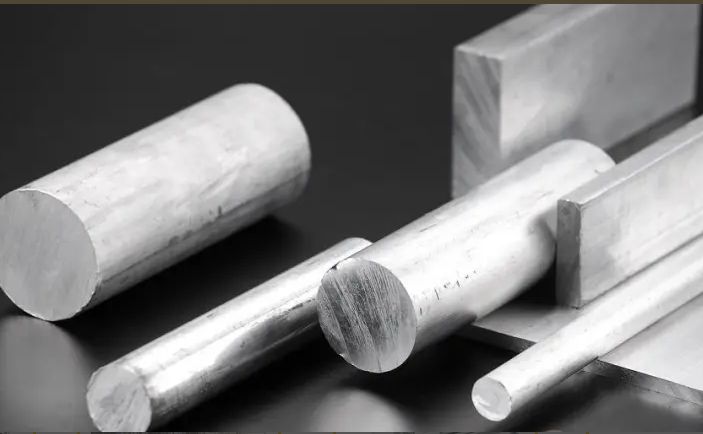Aluminum alloys are a crucial material in numerous industries due to their unique combination of properties and versatility. They are lightweight, corrosion-resistant, and have excellent mechanical properties, making them suitable for a wide range of applications. In this article, we will explore the various alloying systems and types of aluminum alloys available.
Alloy families
Aluminum alloys are typically classified into several families based on their composition and properties. Each family has a specific range of applications and is suitable for different purposes. Here are the main alloy families:
1.Aluminum-Copper alloys (Al-Cu): These alloys contain primarily copper and aluminum. They have good strength, creep resistance, and weldability. Al-Cu alloys are commonly used in transportation, construction, and aircraft manufacturing.
2.Aluminum-Silicon alloys (Al-Si): These alloys are lightweight and have good mechanical strength, casting ability, and weldability. They are widely used in automotive, transportation, and manufacturing industries.
3.Aluminum-Magnesium alloys (Al-Mg): These alloys contain primarily magnesium and aluminum. They are lightweight, have good strength, and are highly resistant to corrosion. Al-Mg alloys are commonly used in construction, transportation, and marine industries.
4.Aluminum-Magnesium-Silicon alloys (Al-Mg-Si): These alloys combine the properties of both Al-Mg and Al-Si alloys. They have good strength, formability, and weldability. Al-Mg-Si alloys are commonly used in transportation, construction, and electronics industries.
5.Aluminum-Zinc alloys (Al-Zn): These alloys contain primarily zinc and aluminum. They have good strength, corrosion resistance, and formability. Al-Zn alloys are commonly used in transportation, construction, and electronics industries.
6.Aluminum-Silver-Copper alloys (Al-Ag-Cu): These alloys contain silver, copper, and aluminum. They have good strength, weldability, and creep resistance. Al-Ag-Cu alloys are commonly used in aerospace and high-performance applications.
7.Aluminum-Zirconium alloys (Al-Zr): These alloys contain primarily zirconium and aluminum. They have good corrosion resistance and mechanical strength. Al-Zr alloys are currently being developed and have limited applications.
Key alloying elements
The properties of aluminum alloys are determined by the alloying elements added to the alloy. Some of the key alloying elements include:
1.Copper (Cu): Copper improves the strength and creep resistance of aluminum alloys. It also enhances the wear resistance and corrosion resistance of certain alloys.
2.Silicon (Si): Silicon enhances the strength and casting ability of aluminum alloys. It also improves the wear resistance and machinability of certain alloys.
3.Magnesium (Mg): Magnesium lightens the alloy and enhances its strength. It also improves the corrosion resistance and weldability of certain alloys.
4.Zinc (Zn): Zinc enhances the strength and corrosion resistance of aluminum alloys. It also improves the wear resistance and formability of certain alloys.
5.Silver (Ag): Silver improves the strength and weldability of aluminum alloys. It also enhances the creep resistance and corrosion resistance of certain alloys.
6.Zirconium (Zr): Zirconium improves the corrosion resistance and mechanical strength of aluminum alloys.
Aluminum alloy design
The selection of the appropriate aluminum alloy for a specific application depends on several factors, including the required mechanical properties, corrosion resistance, formability, weldability, and cost. The alloy design typically involves a careful balance of alloying elements to achieve the desired combination of properties.
The alloy designation typically includes a three-digit number that represents the major alloying elements in the alloy. For example, the alloy designation 6061 represents an alloy that contains approximately 0.8% to 1% silicon, 0.4% to 0.8% magnesium, 0.17% to 0.3% copper, and the balance is aluminum.
Some aluminum alloys also have additional alloy designation codes or prefixes that provide more information about the alloy’s properties or applications. For example, an alloy designated as 6061-T6 has been heat treated to achieve its specified mechanical properties.
In conclusion, aluminum alloys offer a unique combination of properties that make them suitable for a wide range of applications. The various alloy families and their key alloying
Fenan Aluminum Co., LTD. Is one of Top 5 aluminium extrusion companies in China. Our factories cover an area of 1.33 million square meters with annual output of over 400 thousand tons. We develop and manufacture aluminum extrusions for an extensive range of applications such as:aluminum profiles for windows and doors , aluminum solar frames、brackets and solar accessories,new energy of auto components and parts such as Anti-collision Beam、baggage rack、battery tray、battery box and vehicle frame. Nowadays, we have improved our technical teams and sales teams all over the world,to support the increasing demands from customers.

Post time: Sep-05-2023





